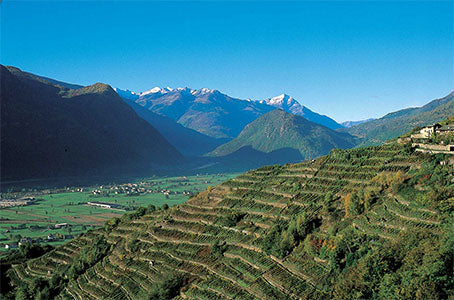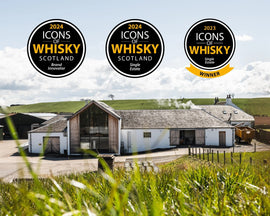Lombardia
After almost 3 years picking regions and wines for the Italian Wine Club, I decided, at the beginning of this month, to look back, take stock and compile some statistics. Curious to see which wine scenes I’d favored, overlooked or outright ignored over the years, I was surprised to discover that other than Molise (Italy’s smallest region; I haven’t been able to find any local white wine), which we’ve yet to visit, Lombardia (aka Lombardy), is the place I’ve neglected the longest.
I say surprised b/c Lombardia, with around 10 million residents, is not only Italy’s most populous region by far - it’s also the country’s financial and industrial hub, and a center for Italian fashion, art,design, architecture, media, music and tourism. It is responsible for 22% of the country’s GDP and boasts an economy the size of Belgium. Maybe that’s why wine isn’t necessarily the first thing that comes to mind when considering the place. As with every other corner of the country though, Lombardia possesses its share of unique and venerable viticultural traditions - and plenty of local vintners farming indigenous grapes on some diverse and absurdly gorgeous landscapes. Once I remembered that, it was easy to locate two great wines from the area, both made from grapes making their debut in the club. Italy is never not amazing.
Anyway, Lombardy can trace its wine tradition back to the pre-Roman Etruscans, who had already refined wine production techniques. From 568-774 A.D, the Germanic Longobardi tribes settled in the region, providing the name by which it has been known ever since. Today, Lombardia is made up of twelve provinces: Bergamo, Brescia, Como, Cremona, Lecco Lodi, Mantova, Milano, Monza-Brianza, Pavia, Sondrio and Varese. Its geography is split almost evenly between mountains and plains, with the Po Valley occupying 47% of the territory. The weather varies due to the diverse terrain, but it is generally considered a ‘cool’ continental climate, influenced by several geographic features, like the Alps located in the north, and the Po River which runs along the Oltrepò Pavese and forms most of the region's southern border with Emilia-Romagna. The most significant winemaking regions are Valtellina in the Alps, known for its age worthy take on Nebbiolo (known locally as Chiavenesca); Oltrepò Pavese in the far southwestern corner, scrunched between Piemonte and Emillio Romana,; and the aforementioned Brescia, in the east, which is responsible for Franciacorta, the sparkling white that is likely Lombardy’s best known oenological product.
Our white this month comes from Valtellina, which is by itself unusual; Nebbiolo so dominates this area that I’m hard pressed to recall another white I’ve tried from the place. But that’s just the start of this particular wine’s singularity. It is a blend of 40% Pinot Nero (Pinot Noir) vinified white, alongside the more traditonal white grapes Pinot Bianco, Riesling and Sauvignon. The only other still white Pinot Nero I’ve ever come across is from Santa Barbara. Information on how and why the winery, Conti Sertoli Salis, started producing this particular bottling is a little scant, but the results very much speak for themselves. Maybe Pinot Nero is Italy’s next great white grape.
Our red comes from Valtenesi, in the Brescia province, south-west of Valtellina, and on the shores of Lake Garda, Italy’s largest. The grape is Groppello, which is new to me as well. It owes its name to the shape of the bunch, so that it looks like a knot, “groppo” in dialect. Feel free to serve it slightly chilled to toast our annual local post-summer sprinkle of actual summer weather.
Salut,
Alan Hicks
Wine BuyerNoe Valley
|
Conti Sertoli Salis Torre Della Sirena Bianco 2020 |
|
|
Region: Valtellina, Sondrio, Lombardy |
About the Winery: Conti Sertoli Salis has been one of the most important and prestigious establishments in Valtellina since it was founded in 1989. The company is based in Tirano, where both the production facility and the original XVII century refining cellars, located inside Palazzo Salis (the historic headquarters of the winery), are situated. The Palazzo's seventeenth century cellars, carved into the rock, are used for longer term ageing in barrels and barriques, and for subsequent refining in bottles. The name Conti Sertoli Salis has been associated with wine production for over 400 years: in the mid 1600s the aristocratic family supplied fine Valtellina wines to the court of the Hapsburg Emperor and to noble Grison families in Valtellina. The Salis Brothers were among the first wine makers to bottle their wine in the entire Kingdom of Italy, according to ancient shipping documents and labels. Bottles dating back 1881 and 1890 were found in the family cellars, kept safe during the many changes of residence. About the Winemaking: After separation from the stems, the grapes, which undergo a slight breakage, along with the release of some of the must, are conveyed into a temperature-controlled tank for approximately 24-30 hours to encourage greater extraction of aromatic substances. This is followed by gentle pressing, extracting a maximum of approximately 50% of the must, which is fermented at a controlled temperature ranging between 14-19°C. Once fermentation is complete, the coarse lees are separated; the various types of new wines are then blended (late October/early November). The resulting mass is stored partly in stainless steel (approximately 90%) and the remainder in American white oak tonneaux, all in contact with the fine lees until the following March. The two batches are then blended. The wine is then stabilized and bottled.40% Pinot Noir, 40% Pinot Blanc, 15% Riesling 5% Sauvignon Blanc. Tasting Notes: Intense, fine, and composed, with fruity notes of white blackberry and yellow plum giving way to a delicate floral note of broom with a gentle herbaceous undertone. Excellent balance and structure, appropriately smooth with a measured flavor, persistence, and a pleasant continuity between the palate and the nose. |
|
Winemakers: Not sure. |
|
|
Price per bottle / Price per case $36.99 $399.50 |
|
|
Suggested Food Pairing: Smoked Meats Spicy Cheeses, Fatty Fish Zuppa di Funghi (see recipe) |
|
|
Sincette Groppello Riviera Del Garda Classico DOC 2022 |
|
|
Region: Riviera del Guarda DOC |
About the Winery: Sincette’s history began in 1979 in Polpenazze del Garda, in the province of Brescia. In this region, the heart of Valtenesi, Giovanni Battista Brunori bought and restored a rural building, which then become Cascina La Pertica. He was supported by his son Ruggero Brunori, an entrepreneur who shares his dream of producing great wines. Additionally, Sincette had the foresight to bring on Andrea Salvetti, to convert the wine production completely to biodynamic farming in 1997, one of the first Italian wineries to do so. Through organic and biodynamic farming Sincette preserves the biodiversity and health of its land and environment, producing wines that brim with vital energy and deliciously pure fruit aromas. About the Winemaking: 100% Groppello, a native varietal of Valtenesi, on the south-western shore of Lake Garda, in Northern Italy. Grapes are handpicked in the second week of September. Fermentation takes place in small cement tanks and oak barrels without the use of selected yeast. After a maceration of 8/10 days, the wine is separated from the skins and the fermentation is slowly completed so that the fruity components are accentuated. Bottled after refinement for 4 months in cement tanks and oak barrels. Tasting Notes: Intensely perfumed dry red wine, offering aromas of strawberry rhubarb, ginseng and bright acidity. Palate adds raspberry, cherry notes, peppery spice and mushroom earth.. |
|
Winemaker: Andrea Salvetti |
|
|
Price per bottle / Price per case $28.99 $313.20 |
|
|
Suggested Food Pairing: Stinky Cheese, Gamey Meats, Roast White Meats, Pizza Night, Red Sauce Zuppa di Funghi (see recipe) |
|
Zuppa di Funghi (Mushroom Soup)
Ingredients
350g (12oz) shiitake mushrooms
250g (9oz) potatoes
10g (1/3 oz) dried porcini mushrooms (optional)
25g (1oz)unsalted butter
3 tablespoons olive oil
salt and freshly ground pepper
1 clove garlic, peeled and crushed
1 tablespoon plain flour
175ml (3/4 cup) dry white wine
1.5 litres (6 cups) chicken stock (or mushroom stock)
1 tablespoon marjoram leaves, finely chopped
2 tablespoons brandy (optional)
fresh parsley, leaves picked and chopped (to serve)
sour cream (to serve)
thinly sliced extra mushrooms (garnish)
Instructions
-
Place the dried porcini in a small bowl, cover with warm water and set aside.
-
Chop the mushrooms and potatoes very finely (You can use a food processor and process them separately).
-
Put the butter and olive oil in a large saucepan. Add the mushrooms and cook on low heat for 5-10 minutes.
-
Add salt and pepper to taste, then add the garlic. Cook for a couple of minutes until fragrant, then add the flour, stirring it well. Then add the wine, stock, potatoes and marjoram.
-
Drain the dried porcini, chop very finely and add to the soup. Add the leftover warm “porcini’ water to the soup, taking care to strain out any bits of dirt that may have settled on the bottom of the bowl. Cook on medium heat for about 30 minutes until the vegetables are cooked through.
-
Discard the garlic. Stir in brandy (if using) and add more salt and pepper to taste.
-
Serve with parsley and a large dollop of sour cream. Garnish with extra thinly sliced mushrooms if desired.




